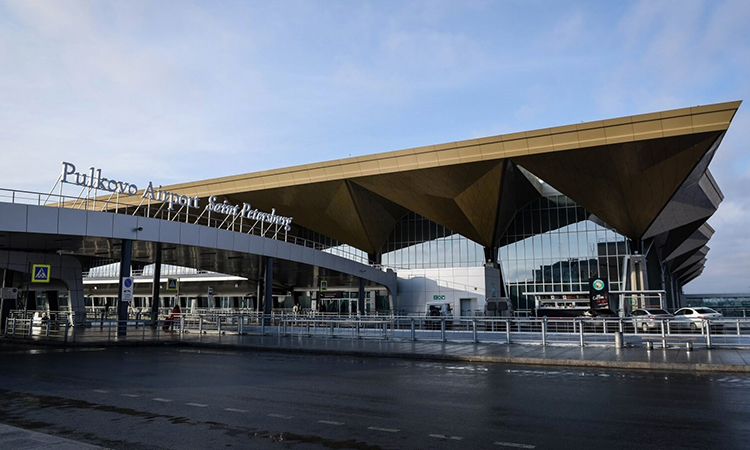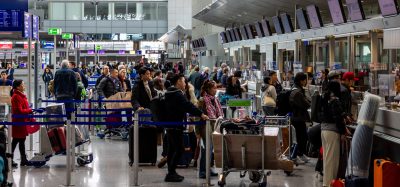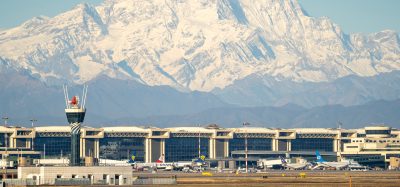Airport adaptability is key in responding to the most unexpected scenario: COVID-19
- Like
- Digg
- Del
- Tumblr
- VKontakte
- Buffer
- Love This
- Odnoklassniki
- Meneame
- Blogger
- Amazon
- Yahoo Mail
- Gmail
- AOL
- Newsvine
- HackerNews
- Evernote
- MySpace
- Mail.ru
- Viadeo
- Line
- Comments
- Yummly
- SMS
- Viber
- Telegram
- Subscribe
- Skype
- Facebook Messenger
- Kakao
- LiveJournal
- Yammer
- Edgar
- Fintel
- Mix
- Instapaper
- Copy Link
Posted: 24 March 2021 | Maxim Romanenko | No comments yet
Maxim Romanenko, Director of Ground Handling at Pulkovo Airport, writes of the lessons learned from adapting and thinking swiftly in response to the unprecedented environment caused by COVID-19 and how these successes can be taken forward in the sector as the virus loosens its hold.


Credit: Pulkovo International Airport
The coronavirus pandemic has provided everyone in airport operations with an excellent opportunity to practice their crisis management skills in full. COVID-19 grounded aviation for some period of time, in a way dissimilar to anything ever seen before. Rapid closure of international boarders, the cease of both international and domestic flights, staff sickness waves – all of the above produced different operational scenarios, from highly tense operations to airport night closures and back to tense summer operations in the domestic sector. Our management team at Pulkovo Airport (LED) had to make quick decisions and adapt planning processes under the particularities of the COVID-19 environment.
Staffing and rostering
For the first time ever, we had to cope with unpredicted scenarios within flight schedules and staff availability at the same time”
For the first time ever, we had to cope with unpredicted scenarios within flight schedules and staff availability at the same time.
Overstaffing followed by the rapid grounding of all international flights and the cease of almost all domestic ones within a short period of time turned to understaffing when COVID-19 came into full force, and flightgrounding was then followed by staff sickness lists.
We found ourselves needing to give greater consideration to how we handled each day’s shift, where you cannot plan the number of staff that will be on duty.
The following steps were taken and, in the end, proved to be correct ones:
- Weekly staff testing – this became the first solid base to build our operational response. Having weekly testing gave us the possibility to see and understand what percentage of staff would not be able to work each week
- Three day flight plan – many flights were grounded by airlines with no clear resumption date. The decision was made to have a three day flight schedule, which was used by ground handling as a three day operational plan to prepare the required workforce. Planning three days ahead may sound funny, but it became a supportive tool during the peak of COVID-19, when, within one to two days, you could have 20 per cent of your shift staff off due to sickness
- ‘COVID formula’ -the three day plan then transformed into a weekly one, as the two above mentioned steps gave us the understanding of the number of flights to handle and the number of staff required versus the staff number available. We received a formula showing us the required workforce level on duty to cover exact operational daily plans. This level of staff, visualised as a percentage, became our ‘red line’ to monitor.
However, even in such a scenario, we still had to accept the risk of staff shortage due to uneven sickness volumes within shifts. Rostering became a big deal. We had to limit contact between shifts to prevent COVID-19 spread. However, at the same time, we had to move staff between shifts to cover the gaps that we had due to COVID-19 sick leaves. To achieve balance, in some cases, we simply had to accept the risk of understaffing in some areas and plan operations in a way to minimise the potential deviation effect from these areas. People were moved between shifts, risks were assessed and controlled and, ultimately, we saw not asingle flight delay related to understaffing.
Facilities limitation
The situation with staff was then followed by limitations from governments in the form of directives on social distancing, temperature checks, PPE obligations and COVID-19 test checks”
The situation with staff was then followed by limitations from governments in the form of directives on social distancing, temperature checks, personal protective equipment (PPE) obligations and COVID-19 test checks. At first, these lead to certain uncomfortable experiences for passengers in their flight journey and, secondly, extended the standard processing and aircraft turnaround time. The allocation of counters was done in a new way, tending to open as early as possible for a flight. Some repatriation flights began sixhours in advance in order to cope with all of the requirements from official bodies.
Surprisingly, no change was noticed for passenger dwell time at the airport for domestic flights. Our preparations to handle late passenger arrivals to the terminal for a domestic flight were not required in the end.
Question on facilities limitation sounded loud, especially for remote stands’ boarding processes and low-cost carriers handling. Bus allocation under social distancing rules, additional passenger checks by crew, passenger and staff PPE becoming Foreign Object Debris (FOD) on the apron – these are the main questions which emerged once faced with the new COVID-19 handling reality.
For boarding, we completely removed contact between staff and passenger by introducing a contactless boarding process. It took some time for passengers to adopt self-scanning their boarding passes, however, this soon was working well. Positively, the introduction of contactless boarding became the first step in the adoption of personnel for our digitalisation plan on passenger seamless travel via the terminal, and the corresponding adoption of all current handling processes that we have.
Reconsidering our approach to slots allocation
COVID-19 clearly showed that the current business approach needs to be reviewed by airport management teams. Peak handling is the most challenging part for ground handling in usual business. Peak handling in the COVID-19 scenario showed peaks as an additional limitation issue. Enabling passengers to distance by 1.5 metres naturally requires more space at check-in. Additional temperature checks at the gate/boarding bridge requires additional time for aircraft turnaround. It is impossible to handle a flight under these conditions and to fulfil a slot in the usual time.
COVID-19 sets limitations for ground handling to be able to handle the same amount of flights as before and for airlines to be able to use these slots”
Airports in particular, and the community in general, may wish to use this time to reconsider the slots allocation process and peak creation. While we fully understand the wish of airlines to use the so called ‘golden hours’, when airlines are often willing to pay for these slots, the question is – do we really need ‘golden hours’ when your business may stop?
COVID-19 sets limitations for ground handling to be able to handle the same amount of flights as before and for airlines to be able to use these slots.
Decomposition of peaks looks to become one of several good tools which will allow all stakeholders to operate with quality and sustainability in the future. Airlines could be interested in operating slots never used before if incentive programmes are initiated by airports to support this step. Airlines would receive theability to operate not in a desired slot, but under favourable conditions from the airport. Ground handling would receive a proper operational plan. The airport would continue its operation and continue to gain the corresponding revenue, which could otherwise be lost. Overall, all stakeholders, and indeed the industry, would achieve sustainability.
No standard for handling in an early post-COVID-19 environment
With the partial resumption of international traffic, countries adopted the corresponding rules for entry. Each country sets its rules to assure passengers of their safety during travel. However, the allowed pre-travel COVID-19 test time varies from four to 72 hours, creating additional issues for passenger handling. Logically, the question arises: if you are a passenger, what airline will you choose, the one accepting you with an existing 72-hour negative COVID-19 test, or the one asking you for an additional four hour pre-travel test?
Travelling wearing a mask, gloves and any other PPE can already make a passenger feel uncomfortable. When preparing for travel during a pandemic such as this, travellers will organise their trip in advance, have their negative test ready and plan their time at the airport in order to make them feel safe for their flight. Having to undergo additional express testing prior to their trip could well add to the discomfort.
The simple question regarding express tests arises from an operational side – how to operate a flight if it is delayed? For a short-haul flight of 1.5 hours of flying time on the leg, you can have a gap of one hour for delay. The test result will still be valid. However, any delay threatens a flight with a flying time of two hours on the leg. Under such a scenario, you arrive at your destination later that your express COVID-19 test allows. If you are allowed to take such a flight anyway, then why cause additional discomfort to a passenger by asking for an express test at all?
Ground handling will adapt to any future operational scenarios. The latest example of Beijing Capital International Airport (PEK) on fully touchless travel via the terminal shows how it can be adapted. The main thing that ground handling and the aviation industry needs now is a standard approach on handling rules and passenger travel for early post-COVID-19 travel, which is happening right now.
It will be of great support to the industry if combined activities on the topic from international organisations – like the International Civil Aviation Organization (ICAO), the International Air Transport Association (IATA) and Airports Council International (ACI) – and governments are successful.
Maxim Romanenko has been Director of Ground Handling at Pulkovo Airport in Saint Petersburg, Russia, since 2019. Prior to joining Pulkovo Airport, he worked for five-star airlines – including Etihad Airways and Qatar Airways. Romanenko is a graduate of the Kazakhstan-German University, holds a Diploma from the Harvard Business School and IATA in Aviation Leadership, is a graduate of IATA’s Ground Management programme and is currently completing ACI’s Airport Management Professional Accreditation Program.
Related topics
Aeronautical revenue, Airport crisis management, Airside operations, Capacity, COVID-19, Ground handling, New technologies, Passenger experience and seamless travel, Passenger volumes, Safety, Self-service, Terminal operations, Workforce
Related airports
Related organisations
Airports Council International (ACI World), International Air Transport Association (IATA), International Civil Aviation Organization (ICAO)

















